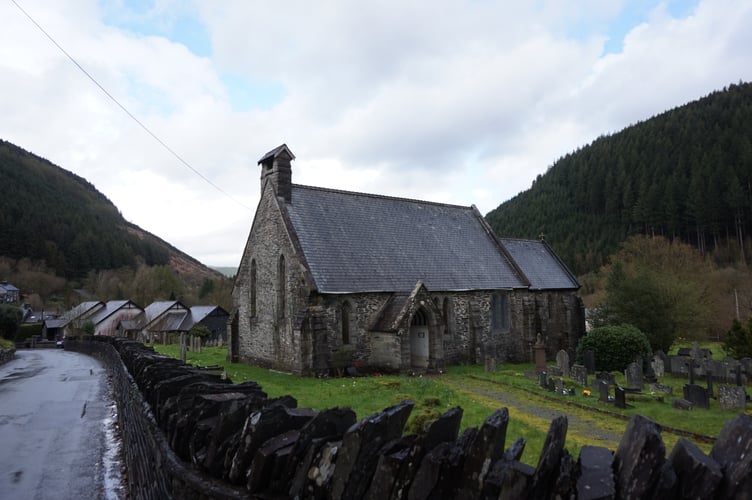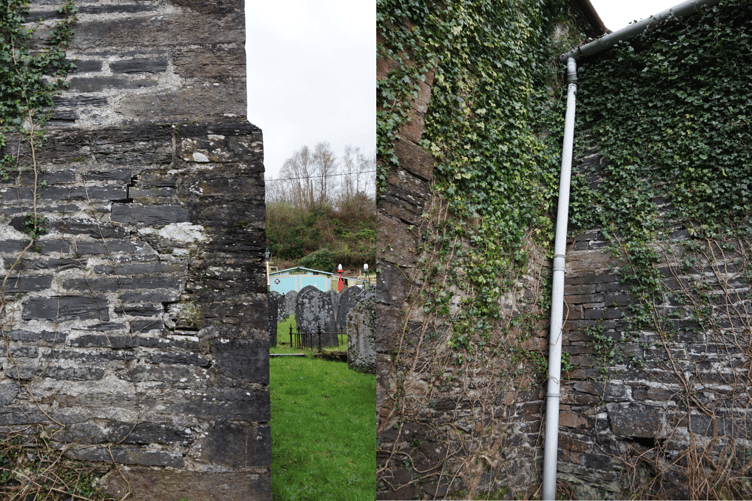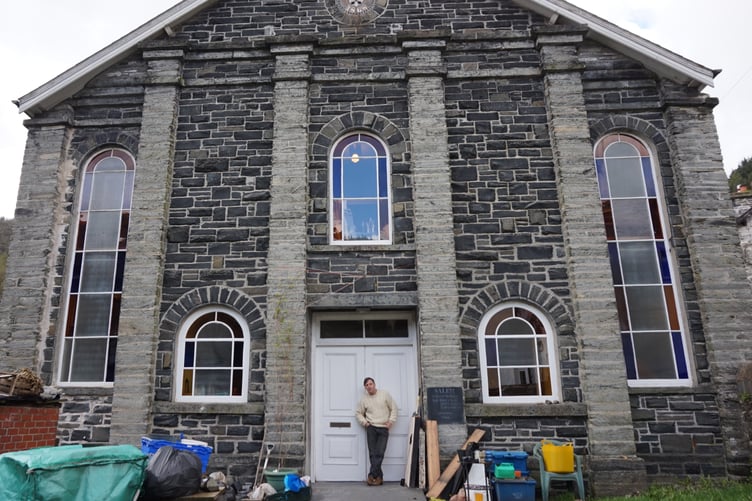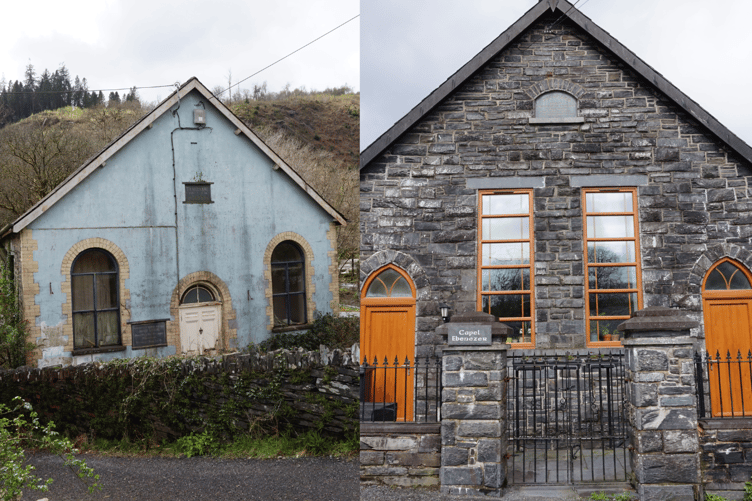The last remaining church in Corris has closed its doors after becoming ‘unsafe’ for worship.
The 164-year-old Holy Trinity has hosted its last hymn after ‘a great big crack’ was found in its foundation.
This is a larger issue than just one church closing its doors as listed building specialist Wayne Colquhuon calls for drastic action to ‘save Welsh churches’ from disappearing from the landscape.
With the only other Corris chapel closing years earlier, Holy Trinity’s congregation now worships at the community centre the Corris Institute with residents stating it’s ‘so sad’ to see the church fall into disuse.

Churchwarden Ceri Sheppard described broken guttering and plaster falling away from the internal walls whilst cracks are visible from outside the church, indicating that it may be slipping into the Dulas valley.
She said: “It’s unsafe for people to go inside.
“There is a sadness, we’re a very happy small but growing congregation.
“However meeting in the Institute is quite nice because we can have coffee and tea, there was no running water in Holy Trinity.
“There has been no attempt to repair it, even if we were able to we wouldn’t have the funds [costing tens if not hundreds of thousands].”
The congregation stopped using the church during the 2020 pandemic when they would stand outside ‘in the howling wind, rain and snow’.

Just metres down the road is Grade II listed Capel Salem which was bought in 2019 to be converted into a house and workshop space by Wayne Colquhoun.
Across Wales more than 10 Anglican churches closed a year from 2007-2017, losing 115 properties with more on the market.
Wayne said: “When I bought Capel Salem the bible was still on the pulpit, as though they had just walked out and closed the door.
“Closing the doors is the danger point. Damp gets through to the motor and dry rot sets in.

“It starts to spread and then becomes an unviable project.
“You need people who can save these buildings because once it’s closed that’s it.
“These characterful structures are pertinent to the Welsh culture- looking at buildings like the attractive Holy Trinity it’s immediately evocative of Welsh history- chapels and churches were hubs of society before cafes and bars.”

The two buildings in Corris built within six years of each other (Trinity in 1860 and Salem in 1868) are indicative of the massive growth in the Dulas valley in the 1800s when work grew from quarries and trains first arrived.
Further down the road in Ceinws the central chapel was converted into a private residence and has ‘changed hands multiple times’ already in the last ten years.
Another chapel metres away was abandoned years ago and has become overgrown with foliage.

The roof tiling is starting to come down and one resident commented that they ‘wouldn’t be surprised’ to see the whole building crumble slowly into the Afon Dulas.
National Churches Trust estimates one UK chapel closes a week, which donated £500,000 to restoration projects across Wales in five years.
.jpeg?width=209&height=140&crop=209:145,smart&quality=75)



Comments
This article has no comments yet. Be the first to leave a comment.